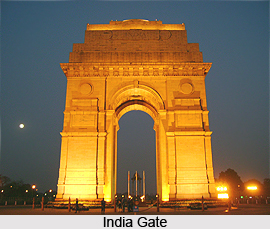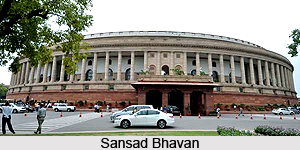 British monuments in Delhi are the living testaments of the glory of colonial era in India. These presently serve as the monuments of national importance and greatly enrich the cultural heritage of the country. Designed by British architects, these monuments exhibit magnificent beauty in terms of architecture and artistry. Built during the British rule in India, these monuments have still retained their splendour and post independence some are used for various official purposes by the government of India.
British monuments in Delhi are the living testaments of the glory of colonial era in India. These presently serve as the monuments of national importance and greatly enrich the cultural heritage of the country. Designed by British architects, these monuments exhibit magnificent beauty in terms of architecture and artistry. Built during the British rule in India, these monuments have still retained their splendour and post independence some are used for various official purposes by the government of India.
India Gate
India Gate is a national monument built during the colonial era in Delhi. It was designed by Sir Edwin Lutyens to commemorate the 70,000 Indian soldiers who died in fighting on behalf of the British Army during the World War I. The foundation stone of the monument was laid in 1921 by His Royal Highness, the Duke of Connaught. Originally the now vacant canopy in front of the monument sheltered a statue of George V, Emperor of India. However it was later shifted to Coronation Park along with many other statues of British era. The memorial has the names of 13,516 Indian as well as British soldiers who lost their lives in Afghan war of 1919. Post independence India Gate served as the tomb of the unknown soldiers for Indian Armed Forces, known as `Amar Jawan Jyoti`.
Secretariat Building
Secretariat Building is another important British monument of India built in 1910 and serves as the home to some of the significant cabinet ministers of India. It is a set of two blocks of symmetrical buildings known as North Block and the South Block which flank the Rashtrapati Bhavan. The building was designed by a renowned British architect Herbert Baker and exhibits beautiful Indo-Saracenic revival architecture with some incorporations of Mughal and Rajasthani architectural styles and motifs.
 Sansad Bhavan
Sansad Bhavan
Sansad Bhavan situated in Delhi is the house of the Parliament of India. Constructed in 1921, the building was designed by the British architect namely Edwin Lutyens and Herbert Baker. Sansad Bhavan has a circular shape resembling the Ashoka Chakra. It was previously known as the Central Legislative Assembly was inaugurated on 18th January 1927 by Lord Irwin who was the then Viceroy of India. The building is set amidst a large garden which is fenced by sandstone railings designed after the Great Stupa of Sanchi.
Teen Murti Bhavan
Teen Murti Bhavan is another wonderful British monument of Delhi which served as the residence of the first Prime Minister of India, Jawaharlal Nehru who resided here for about 16 years. It was designed by the British architect, Robert Tor Russell. It was constructed in the year 1930 as the residence of the Commander-in-Chief of the British Indian Army. Post independence it was taken over as the residence of the prime minister. Presently it shelters a number of institutions including the Nehru Memorial Museum and Library.
Rashtrapati Bhavan
Rashtrapati Bhavan serves as the official home to the President of India. It was built by the British architect Edwin Landseer Lutyens as the residence of British viceroy. Rashtrapati Bhavan constitutes a huge building with four floors and 340 rooms. The building hardly contains any steel in its construction and exhibits various Indian architectural designs. The back of the Rashtrapati Bhavan is adorned with a beautiful Mughal garden.



















